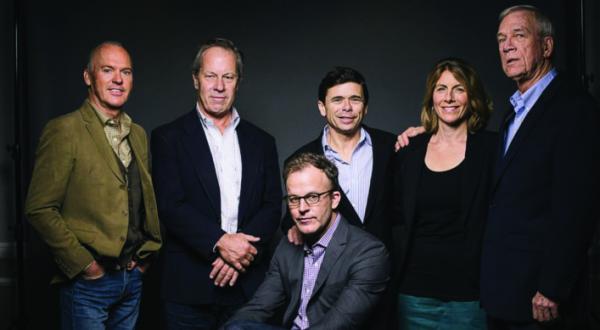There are two mosques in the same district, which are located in the Castle Square area in El Khalifa district in Cairo, whereby the older mosque is called the Mosque-Madrassa of Sultan Hassan (as it hosts a school and a mosque), which is considered as Egypt’s fourth pyramid, and Al-Rifai Mosque.
The Mosque-Madrassa of Sultan Hassan is the crown of Mamluk architecture and the greatest achievement of Islamic art. To describe its glory, a tour guide working in the area mentioned that it was said back at the time it was built, “If pharaonic Egypt was proud of its pyramids, Islamic Egypt should be proud of the Mosque-Madrassa of Sultan Hassan.”
 The construction began in the mosque in 1356 and continued for about seven years. In the meantime, Sultan Hassan was killed at the hands of some of his close associates of the Mamluk princes who accompanied him on one of his fishing trips in 1360, and then they threw his body in the Nile, to be washed away to an unknown place.
The construction began in the mosque in 1356 and continued for about seven years. In the meantime, Sultan Hassan was killed at the hands of some of his close associates of the Mamluk princes who accompanied him on one of his fishing trips in 1360, and then they threw his body in the Nile, to be washed away to an unknown place.
Although the body of Sultan Hassan has not been found to this day, the Egyptians made him a shrine inside the mosque and many go to pray there.
The sultan was known by his justice and people’s love for him, and people come with an Egyptian idiom to describe him, which is “Elly khalf mamatsh” (the one who has children did not die), because Sultan Hassan used to care about his people and try to solve their problems just like his father and grandfather.
People can see his tolerance from the very first step in the school. The first thing they witness in the exterior of the mosque is a pillar ordered by the sultan, which includes carved pictures of a Jewish temple, followed by the Jerusalem’s Dome of the Rock Mosque and “Kanīsatu al-Qiyāmah” (Church of the Holy Sepulchre).
After the main gate, there is a place where the sultan used to receive the people and listen to their complaints every Friday.
Then there is the main hall to receive lessons of Islamic science. This hall is divided into a courtyard with a fountain and four “Iwans”, which is a hall or space, walled on three sides, with one end entirely open to the courtyard.
There is also a hospital and places for food and sleep for the students who came to learn at the school.
The main door, which was made of gold, brass, and silver, was sold by Sultan Hassan’s sons and replaced by a wooden door.
The Quran holder is the second largest holder in Islamic monuments.
The second mosque in the district, which is the newer of the two, is called Al-Rifai Mosque, which was built in 1911 by the order of Khushyar Hanim, the mother of Khedive Ismail.
 Al-Rifai Mosque replaced Al Zakhira Mosque, which means artillery.
Al-Rifai Mosque replaced Al Zakhira Mosque, which means artillery.
Previously, the mosque had a story whereby the tour guide mentioned how because the man who ordered to build the mosque forced the builders to build it without taking any money, the workers said, “We will build the mosque not for you, but for God,” and after this it was known also by the name “La bel Allah” (for God).
The Quran holder is the largest holder in Islamic monuments.
Al-Rifai Mosque contains royal graves for Mohamed Ali’s family. These include the graves of King Farouk, Princess Ferial, and Khushyar Hanim.
There is also a grave for former Shah of Iran Mohammad Reza, where the floor is made of marble, which was equivalent to the value of $1,000 for each piece, and the floor is covered with the most expensive carpet in the world.
Every year, in memory of his death in July, his wife, Farah Deba, comes to commemorate his passing anniversary.
Finally, there is the grave of Abu Shebak (Shebak is Arabic for window), the son of Al-Rifai.
People call him son of the window because of two commonly known legends.
The first one is because his father left Egypt when his wife was pregnant and did not see his son, hence Al-Rifai told her, “If my son wants to see me, tell him to look from this window and he will see me in Iraq,” according to the tour guide, who added that when Ali became a man, he saw his father in Iraq from Egypt through this window.
The other legend is that Ali had a special ability that enabled him to move his spirit from Egypt to Mecca, without moving his body to pray, but if one of the people wanted help, then he would knock on the window, hence Ali’s spirit came back to his body in Egypt to help people.




